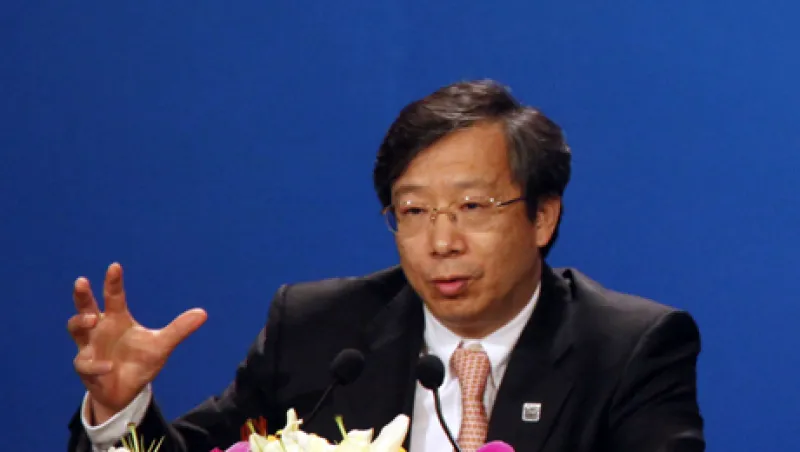China is determined to push a “gradual, stable, decisive” menu of financial reforms, staring with liberalization of its currency excahnge rate, deputy central bank governor Yi Gang told a seminar at the IMF/World Bank annual meeting today.
The Beijing government’s twelfth five-year economic plan calls for financial reform on three fronts, Gang explained: lifting exchange rate controls, liberalizing capital flows, and freeing domestic interest rates. The country will take them up in that order, he said, minimizing concerns of other speakers that current regulations on interest rates are substantially distorting the Chinese economy.
Yi pointed to considerable progress on raising the value of the renminbi and as a result shrinking the huge Chinese trade surpluses that are at the core of global financial imbalances. The country’s current account surplus peaked at 11 percent of gross domestic product in 2007.That fell to 5 percent last year and 3 percent in the first half of 2011. During those years the currency has appreciated an average of 5.5% annually against the dollar.
“Our exchange rate is on the path of convergence to equilibrium,” Yi said. He declined to set a target date for when the rate will be completely free, or what its unhindered market value might be.
The Chinese deputy governor differed most dramatically from outside experts on the question of Chinese interest rates, which are currently fixed at rates that offer consumers a negative rate of return. The standard rate for a time bank deposit is 3.5%, while inflation is running at 6.5% annually. That deposit disincentive plus low managed rates for lending, starting at 6.5 percent, force considerable distortions on the Chinese economy, said Nicholas Lardy, a fellow at the Peterson Institute in Washington.
The most serious consequence is overinvestment in real estate, which consumers see as the only store of value available to them, he said. “China is investing 9 percent of GDP in urban residential property,” Lardy said. “That is an unprecedented level,” he added. The equivalent figure for India is 5 percent, while Taiwan’s urban housing investment peaked at 4 percent of GDP during its rapid growth phase in the 1980s. The huge sums pouring into housing are driving a price bubble and raising the cost of strategic commodities, as 40 percent of China’s steel usage goes for home building, Lardy concluded.
Nigel Chalk, who heads the IMF’s office in China, weighed in on Lardy’s side, though a bit more diplomatically. “China has a propensity to property bubbles,” he said, thanks in part to credit that is artificially cheap. Regulated rates also threaten credit quality, he said, and may force financial flows into less-transparent non-bank institutions, as was the case in Western countries before 2008. “We would like to see credit constrained by an upward movement in interest rates,” he said.
But Yi minimized these concerns. Chinese interest rates have been on a gradual path toward liberalization since the 1990s, he pointed out, with interbank rates now completely unregulated. Even at the current deposit rate of 3.5 percent, foreign funds are flooding into China. The government does not want to accelerate this process by raising that rate. He also predicted that the negative real interest rate will soon disappear as inflation falls. “As a central banker I hate negative interest rates,” Yi said. “But looking at the policy considerations overall, current interest rates are OK.”
Yi also saw no cause for alarm in Chinese housing prices. Apartment prices in Beijing and Shanghai may have risen above those in Chicago or Berlin, he noted, but they still lag Asian capitals such as Seoul or Taipei. “Prices are at a more or less appropriate level,” he concluded.






